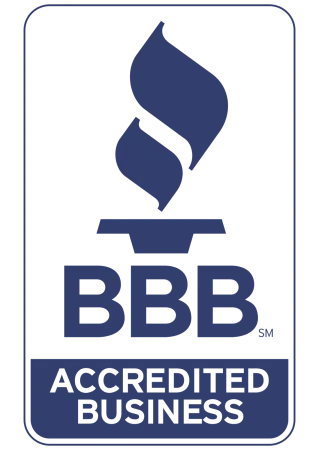You've been working hard and saving diligently for one goal: a stress-free and joyous retirement. You want to have fun! But when is it the right time to retire — and how do you know if you're genuinely prepared?
While the traditional retirement age in the U.S. is around 65 (or 67 for younger generations), the ideal retirement age depends on more than just your age — it's about your financial stability, desired lifestyle, and long-term goals.
Whether you're just starting your retirement planning or fine-tuning your approach, HEFCU is here to help. Looking for a good retirement investment? Or wondering about Roth IRA benefits?
In this article, we'll break down the difference between Traditional IRA vs Roth IRA benefits and also go over Roth IRA max contribution rules for 2025.
From opening your first Roth IRA account to building a comprehensive family security plan, our advisors are ready to guide you every step of the way.
9 Tips to Retire Comfortably
A comfortable retirement doesn't happen by chance — it takes planning, discipline, and smart financial decisions. Whether you're just getting started or reassessing your current plan, these tips can help you stay on track and retire with confidence.
1. Make saving a habit — and stick with it
Aim to save at least 10 times your annual income by age 67 to maintain your lifestyle in retirement. Already saving? Great — keep going. Just starting? That's okay too. Begin with what you can and gradually increase your contributions.
To start with, a good rule of thumb is to contribute at least 15% of your total income each year, including Social Security benefits and any match from your employer.
The earlier you start, the more time your money has to grow and it's never too late (or too early) to start saving.
2. Understand what retirement will cost you
Retirement can be more expensive than expected. Most people will need 70-90% of their pre-retirement income to maintain their current standard of living. Knowing this early can help you set realistic savings goals and make more informed financial choices.
3. Maximize your employer's retirement plan
When it comes to demystifying retirement plans, one of the most common employer-offered plans is a 401k. If your employer offers a retirement savings plan like a 401(k), take full advantage of it. Contribute as much as you can — especially enough to qualify for any employer match, which is essentially free money.
Automatic payroll deductions make saving effortless, and the combination of tax benefits and compound growth over time can significantly boost your retirement savings.
Be sure to understand the details:
- What percentage must you contribute to get the full match?
- How long do you need to stay to be fully vested in your employer's contributions
4. Open an individual retirement account (IRA)
An IRA is a powerful tool for building retirement savings — even if you don't have access to a workplace plan.
- For 2025, the Roth IRA max contribution is $7,000 annually (or $8,000 if you're 50 or older).
What's the difference between Traditional IRA vs Roth IRA? The main difference between the two is based on tax preferences.
With a Traditional IRA, you don't pay taxes on the money you put in now, but you pay taxes when you take it out in retirement. With a Roth IRA, you pay taxes on the money before you put it in, but when you take it out later, it's all tax-free.
The right choice depends on your current and future income and tax situation: a Roth IRA is usually better if you expect your tax rate to be higher later on, while a Traditional IRA might be a smarter option if you think your tax rate will be lower when you retire.
5. Understand your pension benefits
If you're covered by a traditional pension plan, make sure you know exactly how it works with basic questions like:
- Are you eligible?
- What will your benefit be at retirement?
- What happens to your pension if you change jobs?
Request a benefit statement to see how much you've earned and learn about any pension benefits you may have from previous employers. Also, check if you're entitled to benefits from a spouse's plan — every income source counts when building a strong retirement foundation.
6. Diversify your investments
Saving is essential — but how you invest your savings is just as important. Understand how your retirement plan is invested and explore your available options.
Diversify your investments to spread out risk and improve your potential returns. Remember: iInflation, risk, and returns all impact your long-term growth.
Your ideal investment mix will evolve over time, depending on your age, goals, and financial situation. The more informed you are, the more confident and secure your financial future can be.
7. Don't dip into your retirement savings early
As tempting as it might be, tapping into your retirement funds early can set you back significantly. You may lose valuable compound interest, tax advantages, and could face penalties for early withdrawal.
If you switch jobs, consider rolling your savings into an IRA or your new employer's plan to keep your retirement money working for you.
8. Learn about your Social Security benefits
Social Security typically replaces about 40% of your pre-retirement income, but the exact amount depends on your earnings history and when you start claiming benefits.
With the shifting state of Social Security Benefits, it's important to understand the new Social Security updates for retirees in 2025 and stay updated with the changing laws.
Use the Social Security Administration's online retirement estimator to get a personalized estimate, or call 1-800-772-1213 for more information.
9. Keep asking questions and seek guidance with HEFCU
These tips are just the starting point. For personalized advice, read our helpful resources, and talk to our advisors at HEFCU. Don't hesitate to ask questions — understanding your options is key to making smart decisions and securing your future. Contact us today!



